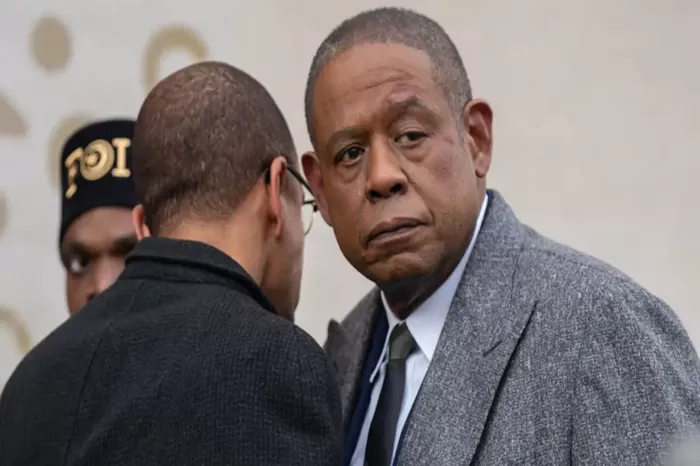In the ever-expanding landscape of television series, few have captured the essence of historical drama quite like “Godfather of Harlem.” From its inception, the show garnered attention for its gripping narrative, stellar performances, and meticulous attention to detail in portraying the tumultuous era of 1960s Harlem. However, as the series progressed, viewers noticed shifts in its tone, pacing, and character arcs, prompting many to ponder: What happened to “Godfather of Harlem”?
The Rise to Prominence
Created by Chris Brancato and Paul Eckstein, “Godfather of Harlem” debuted in 2019 to critical acclaim. Centered around the life of infamous crime boss Ellsworth “Bumpy” Johnson, portrayed masterfully by Forest Whitaker, the series offered a nuanced exploration of power dynamics, racial tensions, and the intersection of organized crime with political influence.
The first season of “Godfather of Harlem” immersed viewers in the vibrant yet volatile world of 1960s Harlem, as Bumpy Johnson returned from a decade-long stint in prison to find his neighborhood under the control of the Italian mob. With the Civil Rights Movement as its backdrop, the series deftly navigated themes of identity, loyalty, and the pursuit of the American Dream.
Critical Acclaim and Audience Adoration
Critics and audiences alike praised “Godfather of Harlem” for its compelling storytelling and strong performances. Forest Whitaker’s portrayal of Bumpy Johnson was hailed as a tour de force, capturing the complexities of a man torn between his criminal empire and his desire for redemption. The supporting cast, including Vincent D’Onofrio as Vincent Gigante and Ilfenesh Hadera as Mayme Johnson, added layers of depth to the narrative, creating a rich tapestry of characters.
Moreover, the series’ commitment to historical accuracy was commendable. From the meticulously recreated sets to the authentic costumes and soundtrack, “Godfather of Harlem” transported viewers to a bygone era with remarkable authenticity. The attention to detail extended beyond aesthetics, with the show tackling issues of race, class, and power dynamics with nuance and sensitivity.
The Evolution of a Series
However, as the series progressed into its subsequent seasons, some viewers noted a shift in its narrative focus and pacing. What began as a character-driven drama with political undertones seemed to veer into more conventional territory, with an increased emphasis on action and spectacle.
One factor that contributed to this shift was the expansion of the series’ scope. While the first season primarily revolved around Bumpy Johnson’s struggle to reclaim his territory from the Italian mob, subsequent seasons introduced new storylines and characters, often at the expense of existing ones. While this approach allowed for greater exploration of the social and political landscape of 1960s Harlem, it also led to narrative sprawl and a dilution of focus.
Moreover, some critics pointed to inconsistencies in character development and plot progression. Certain storylines seemed rushed or underdeveloped, while others meandered without clear direction. Additionally, the introduction of real-life figures such as Malcolm X and Muhammad Ali added intrigue but occasionally felt shoehorned into the narrative for the sake of historical relevance.
See also: 8 Ways To Watch Godfather Of Harlem For Free
Navigating Challenges
Like many television series, “Godfather of Harlem” faced its share of behind-the-scenes challenges. Production delays, changes in creative direction, and the departure of key personnel all contributed to the series’ uneven trajectory. Furthermore, the COVID-19 pandemic disrupted filming schedules and forced the production team to adapt to new safety protocols, further complicating matters.
Despite these challenges, “Godfather of Harlem” continued to attract a devoted fan base and maintain a respectable viewership. The series’ exploration of themes such as race, identity, and power remained timely and relevant, resonating with audiences seeking thought-provoking entertainment.
Looking Ahead
As “Godfather of Harlem” moves forward, there is hope that it will rediscover the magic that made its debut season so captivating. With the foundation laid and a wealth of historical material to draw from, the series has the potential to recapture its former glory and deliver a compelling narrative that does justice to the rich tapestry of 1960s Harlem.
Conclusion
The question of what happened to “Godfather of Harlem” is a complex one with no easy answers. While the series has faced its share of challenges and criticisms, it remains a testament to the enduring power of storytelling and the ability of television to illuminate the past and provoke thought about the present. As audiences eagerly await the next chapter in Bumpy Johnson’s saga, one thing is certain: the legacy of “Godfather of Harlem” will endure for years to come.
Related topics:
How To Watch Godfather Of Harlem Without Epix
Best 5 Channels To Watch The Chosen For Free

